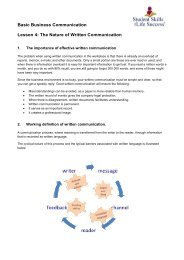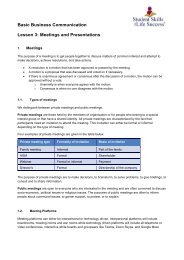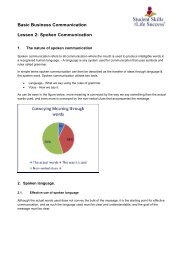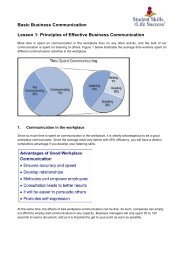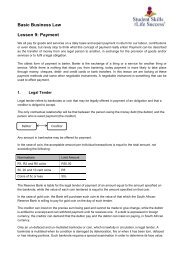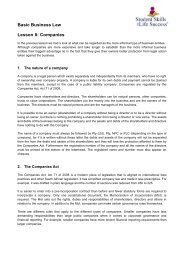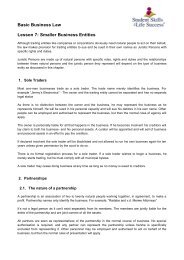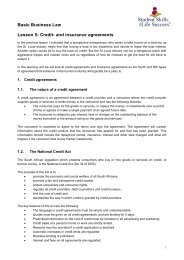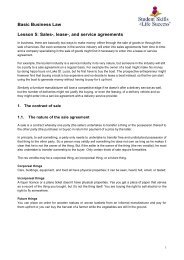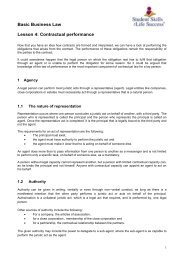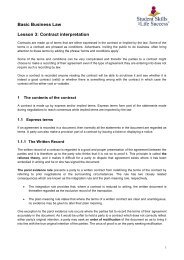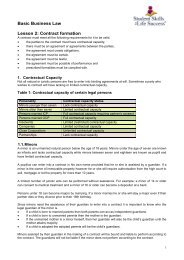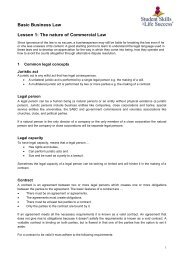Purchasing and Financing 2024
Purchasing- and Financial Management For 2nd year CATS learners. Aligned to the outcomes of the German accredited certification: “Industrie Kaufmann/frau”.
Purchasing- and Financial Management
For 2nd year CATS learners.
Aligned to the outcomes of the German accredited certification: “Industrie Kaufmann/frau”.
You also want an ePaper? Increase the reach of your titles
YUMPU automatically turns print PDFs into web optimized ePapers that Google loves.
Evaluating the Management Efficiency of an Organisation<br />
a. Accounts Receivable Turnover<br />
Accounts Receivable Turnover allows a company to measure whether or not the company<br />
is effectively collecting payments for sales on credit. A high turnover indicates higher cash<br />
basis sales or efficient collections. A low turnover indicates collection problems <strong>and</strong><br />
possible bad debts.<br />
Most companies do not charge interest on Accounts Receivable unless the account<br />
becomes past due. An extension of credit is then essentially an interest free loan to<br />
customers <strong>and</strong> not collecting payments on time creates inefficiency <strong>and</strong> opportunity costs<br />
for the company.<br />
For example, the company could use the cash to invest the money <strong>and</strong> earn interest, pay<br />
down debt from which the company is incurring interest expenses, or finance growth<br />
opportunities instead of having money tied up in Accounts Receivable.<br />
Accounts Receivable Turnover = Net Credit Sales/Average Net Receivables<br />
(Net Average Receivables = (Beginning Net Receivables Balance + Ending Net Receivables<br />
Balance)/2<br />
Alternatively, businesses may calculate Accounts Receivable Turnover in a two-step<br />
process as follows:<br />
1. Average Sales/Day = Credit Sales or Total Sales/365<br />
2. Average Collection Period = Accounts Receivable/Average Sales/Day<br />
The Average Collection Period can then be translated to Inventory Turnover by dividing<br />
the number of days a year by the Average Collection Period,<br />
Inventory Turnover = Number of days a year/Average Collection Period<br />
Add meaning to these numbers by comparing them with the industry averages:<br />
The company should monitor Accounts Receivable balances during the year, <strong>and</strong> compare<br />
Accounts Receivable Turnover per quarter <strong>and</strong> per year to ensure turnover does not<br />
decrease from period to period.<br />
b. Asset Turnover Ratio<br />
The Asset Turnover Ratio measures the number of sales generated from each r<strong>and</strong> of<br />
assets. It is a measure of how efficiently the company has used its assets to generate gross<br />
revenue, the higher the ratio the better.<br />
It is calculated as follows in two steps:<br />
46




